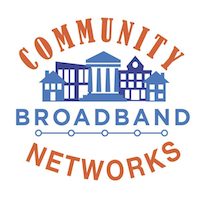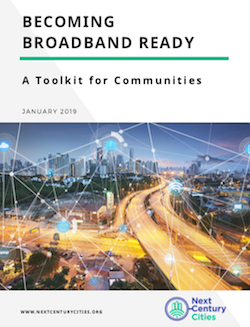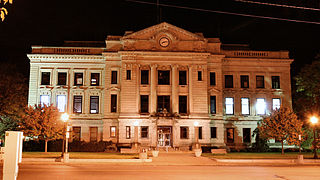
Fast, affordable Internet access for all.


Many people have come to us for advice on how to get started on an effort to improve Internet connectivity. We've created resources to help you and your community and have curated materials from other organizations to help as you seek a path to better Internet access. Please let us know if you have suggestions or additional comments by emailing us - broadband@muninetworks.org.
An increasing number of municipalities and cooperatives are investing in telecommunications infrastructure to serve public facilities, local businesses, and residences (see our map here). They're filling the gaps created by large national cable and telephone companies, which have focused their investments in primarily areas with assured returns. As a result, rural areas and urban regions with higher concentrations of low-income households don't have the Internet access they need. Often the infrastructure just isn't there; sometimes it's unaffordable.
In order to correct these errors and bring fast, affordable, reliable connectivity to all of their citizens, communities are implementing change at the local level. Each municipality, county, and region is unique, and so need to review potential policies to determine which suit their community and vision.
 In the summer of 2019, Next Century Cities (NCC) released the Becoming Broadband Ready Toolkit, the most comprehensive resources we've seen to help local communities. This comprehensive resource covers considerations from early in the process to determining success throughout implementation. In addition to offering guidance with examples from across the country, the toolkit offers links to other resources, such as model ordinances, reports, podcasts, and organizations laser-focused on specific and relevant issues.
In the summer of 2019, Next Century Cities (NCC) released the Becoming Broadband Ready Toolkit, the most comprehensive resources we've seen to help local communities. This comprehensive resource covers considerations from early in the process to determining success throughout implementation. In addition to offering guidance with examples from across the country, the toolkit offers links to other resources, such as model ordinances, reports, podcasts, and organizations laser-focused on specific and relevant issues.
The toolkit organizes material into overreaching themes, such as building community support, establishing policies to encourage investment, and the pros and cons if publicly owned models, among many other considerations. Within each broad topic, however, NCC has dug deep into specifics, such as addressing simplified permitting practices, creating digital inclusion plans, and ways to work around legislative or regulatory barriers. Throughout the toolkit, NCC turned to the many members of the organization for real-world examples of workable solutions.
Download the toolkit from the NCC website here
Over the years, we've also developed resources that can help educate and spread the word about the benefits of community networks as your project moves forward. Whether your project begins at the grassroots with regular folks in the community or in City Hall, these resources are easily accessible and help explain why community networks are a potential alternative.
Resources
Tools:
Volunteers in Shutesbury will fan out this weekend to perform a "pole inventory blitz" reports the GazetteNet.com. The town of approximately 1,800 people sits near Leverett and faces many of the same difficulties with connectivity.
Shutesbury and Leverett were working together a few years ago hoping to develop a solution to bring infrastructure to both communities. The two communities approached Verizon and Comcast asking for better connectivity, but their requests led to nothing. Eventually, Leverett became frustrated and broke out on their own. They are now deploying their own fiber network.
One of the first steps in determining the feasibility and costs to deploy a fiber network is accurately evaluating assets. Many local communities do not have an up-to-date inventory of utility poles or what entities own those poles. In Lake County, Minnesota, Frontier Communications asserted ownership of utility poles in the town of Two Harbors after fiber had been strung on those poles. Unfortunately, the county's records had not been revisited in some time and Frontier was able to produce records put ownership in question. The project was significantly delayed; planners eventually moved more fiber underground to avoid many of those poles. Pole inventories and due diligence, as in Shutesbury, help avoid delays and unanticipated cost increases. (Read all about Lake County's project in our recent report, All Hands on Deck: Minnesota Local Government Models For Exanding Fiber Internet Access)
A community group from Baltimore is taking their fiber campaign directly to the people. The Baltimore Sun recently reported that over 900 people have pledged more than $17,000 to the Baltimore Broadband Coalition. It seems the good people of Baltimore are tired of the city's on-again off-again romance with the idea of a municipal network.
According to the group's CrowdFiber site, the grassroots organization began in a church basement in the Roland Park neighborhood, quickly expanding to other neighborhoods. There is no specific plan in place yet; the group hopes to use the campaign to first raise awareness of the problem. From the article:
"This is an advocacy effort to help to change what has been the city's plan, or lack of plan, on broadband," said Philip Spevak, one of the campaign's organizers. "Those numbers will help to motivate the city."
Members of the group are also visiting community meetings to help spread the word.
In a Sun commentary published shortly after the group organized, Spevak wrote:
Demonstrating demand alone is unlikely to change the broadband landscape. By adding communities to our campaign and extending the campaign to include the entire city, we hope to engage our city and state leaders to a greater extent. We hope our campaign will lead to a second phase where, in partnership with elected officials, there is a change toward more proactive public policy. Mayor Stephanie Rawlings-Blake and Councilman William Cole understand that the availability of fast Internet is a necessity for economic revitalization.
Spavek went on to explain their belief that the vision should be unique to suit the community, that Baltimore should locate and use its existing conduit, and that the city should adopt helpful dig-once policies. The group also wants the city to keep citizens, providers, and other stakeholders connected and reach out to federal officials.
The Media Action Grassroots Network (MAG-Net) recently hosted a Community Cohort Call titled Tech In The City: A Conversation About Community Broadband Access. Chris Mitchell, Andrea Figueroa Martinez, John St. Julien from Lafayette, and other community broadband advocates discuss the current state of U.S. broadband infrastructure.
Chris offers perspective on monopolistic behavior from current mega providers and how they find ways to limit our options. What can we do to counteract the powerful cable and telecommunications lobbies to preserve an open and free Internet? How can we guarantee affordable access? This panel discussion looks at long-term strategies and actions we can take now.
The Free Press announced that more than 50 public interest groups, including the Institute for Local Self-Reliance, signed on to its letter in opposition to the Time Warner/Comcast merger.
The letter, addressed and delivered to Attorney General Eric Holder and FCC Chairman Tom Wheeler, begins:
The proposed Comcast-Time Warner Cable merger would give one company enormous power over our nation’s media and communications infrastructure. This massive consolidation would position Comcast as our communications gatekeeper, giving it the power to dictate the future of numerous industries across the Internet, television and telecommunications landscape.
In the press release, Craig Aaron, President and CEO of the Free Press, stated:
“The question before the FCC is whether this deal serves the public interest. The answer is clear: A bigger Comcast is bad for America.
“Merging the nation’s two biggest cable-Internet providers would turn Comcast into our communications gatekeeper, able to dictate the cost and content of news, information and entertainment. We need an Internet and video marketplace that offers people high-quality options at prices they can afford — not a near-national monopoly determining what we can watch and download.
“In the past four years, Comcast has raised basic cable rates in some markets by nearly 70 percent. Its top lobbyist has admitted that the price increases will continue to skyrocket if the merger goes through. And that's about the only thing Comcast has said about this deal that you should believe.
“The growing chorus of groups opposing this takeover knows the truth. The only rational choice is for the FCC and Justice Department to reject this merger."

In 1985, Auburn Electric became one of the first communities in the midwest to deploy fiber. At the time, the purpose was to improve electric and voice systems substation communications within the municipal utility. That investment laid the foundation for a municipal network that now encourages economic development and saves public dollars while enhancing services.
Auburn expanded its fiber network beyond electric systems in 1998. The utility began using the network to serve city and county government operations. It is not well known, but Auburn offered gigabit service to its public sector customers way back in 1998.
The benefits from the deployment prompted community leaders to develop an Information Technology Master Plan in 1998 that would answer the question of what other ways the fiber could serve the community? As part of the Master Plan, Auburn leaders collected information from other communities that were capitalizing on their own local fiber. While Auburn made no immediate plans, they kept an open mind, waiting until the time was right.
In 2004, Cooper Tire and Rubber (now Cooper Standard) was about to be sold from its parent company. The $1.6 billion auto component manufacturer needed a data center but bandwidth was insufficient and inconsistent in Auburn. Cooper considered leaving because the incumbents, Mediacom and AT&T, could not or would not provide the broadband capacity the company needed. If Cooper left town, an estimated $7 million in wages and benefits from 75 high-paying tech jobs would also leave. At the time, Auburn was home to 12,500 people.

According to Schweitzer, the City tried to persuade the telephone company to find a solution with Cooper but the two could not reach an agreement. Rather than lose Cooper, the City of Auburn stepped in to fill the connectivity gap in 2005.
In a 2007 interview with Public Power magazine, Schweitzer noted advantages in Auburn that facilitated the project:
Approximately 60,000 people live on Aquidneck Island in the towns of Portsmouth, Newport, and Middletown. The Ocean State Higher Education Economic Development and Administrative Network (OSHEAN) travels to the island but community leaders want to find a way to provide services to more residents, businesses, and institutions. OSHEAN is an under utilized middle mile network and most on the island still receive single digit Mbps service.
The Aquidneck Broadband Advisory Board hopes an investment in a last mile network will spur economic development, expand the use of OSHEAN, and increase telecommuting possibilities on the island. The group includes members from each of the three municipalities, local business leaders, and citizens. A recently released Request for Information seeks input regarding a potential gigabit last mile network that can support data, video, and voice. According to the RFI:
This effort will result in the development of a master plan for improving broadband infrastructure island‐ wide, including finance options, grants, and policies for the installation of high speed fiber optic broadband.
The Board will accept responses until November 15, 2013. A PDF of the RFI is posted on the Newport website.
